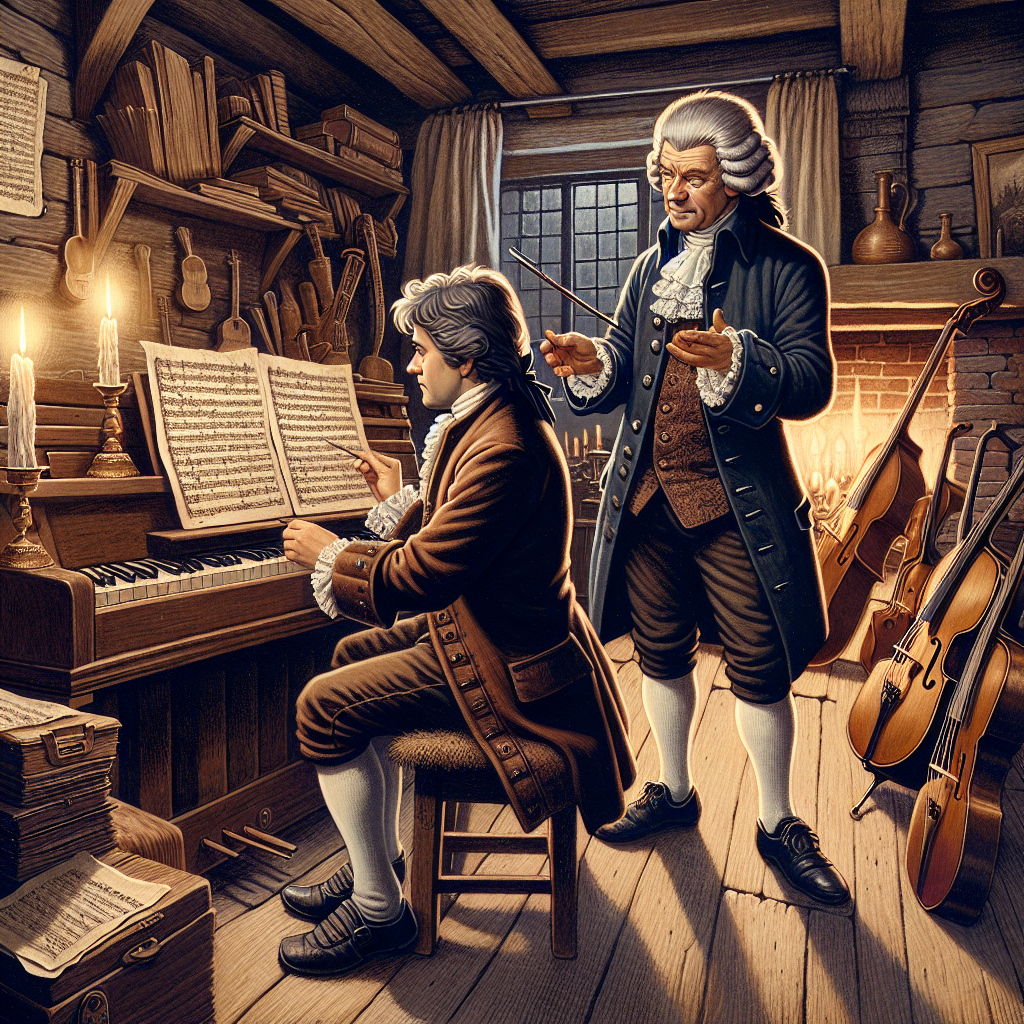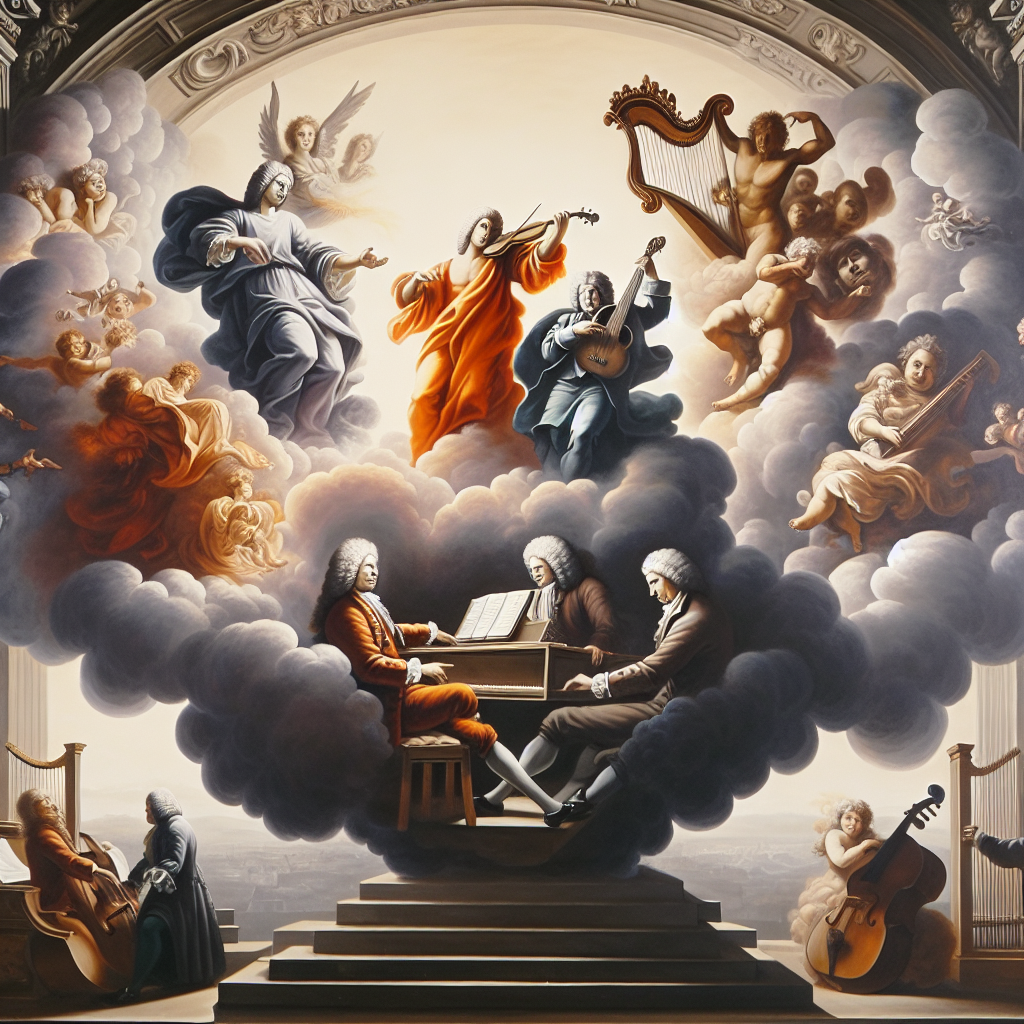
Beethoven and Bach: Baroque Influence on a Musical Genius
Ludwig van Beethoven, one of the most celebrated composers of all time, has influenced countless musicians and composers since his era. Born in Bonn, Germany, in 1770, Beethoven’s life and work are often examined for their revolutionary development and profound impact on Western classical music. However, while Beethoven is frequently analyzed in terms of how he paved new roads for future musicians, an equally compelling story lies in the influences that shaped his own musical journey. One of the most significant of these influences was Johann Sebastian Bach.
Bach, a towering figure of the Baroque era, composed in a style that was both intricate and highly structured. Although he passed away in 1750, nearly two decades before Beethoven was born, his works remained central to the musical canon and significantly impacted Beethoven’s compositions. Understanding the relationship between these two iconic figures offers insights into the evolution of Western classical music. By examining how Beethoven absorbed and modified Bach’s techniques and ideas, we can better appreciate both composers’ legacies.
This article will explore the life of Ludwig van Beethoven, focusing on how Johann Sebastian Bach and other contemporaries influenced his musical development. We’ll delve into their historical contexts, analyze specific works, and uncover how the Baroque foundation set by Bach gave rise to Beethoven’s revolutionary compositions. This journey not only adds layers to our understanding of Beethoven but also highlights the enduring power of Bach’s music. You’ll come away with a deeper appreciation for how the threads of musical creativity weave across generations, creating a rich tapestry that continues to inspire listeners and musicians alike.
The Early Life of Beethoven
Beethoven was born into a musical family. His grandfather and father were singers at the court of the Elector of Cologne, and his early exposure to music was undeniable. His father recognized Ludwig’s talent early on and pushed him hard, often subjecting him to rigorous practice schedules. This intense early training laid the groundwork for Beethoven’s technical prowess but also created a complicated relationship with music due to his father’s sometimes harsh methods.
At a young age, Beethoven displayed an exceptional talent for both performing and composing. By the age of 12, he had published his first work, a collection of piano pieces. It wasn’t long before his abilities caught the attention of Christian Gottlob Neefe, the court organist who became his first significant mentor. Neefe introduced Beethoven to the works of Bach, particularly the “Well-Tempered Clavier,” which Beethoven regarded as a musical bible. This exposure was crucial in shaping Beethoven’s understanding of counterpoint and other intricate compositional techniques that would become signature elements of his music.
While still a teenager, Beethoven moved to Vienna, the heart of the classical music world at that time. Here, he became a student of Joseph Haydn and gained exposure to other prominent musicians and composers of the day. As he mingled in these elite musical circles, he absorbed various styles and ideas, but his foundational training in Bach’s works always stood out as a bedrock upon which he built his compositions.
Bach’s Influence on Beethoven’s Compositions
Bach’s influence on Beethoven can primarily be seen in the way Beethoven employed counterpoint and fugue in his works. Counterpoint, the art of combining independent melodic lines, and fugue, a form where a theme is introduced and then developed in interweaving parts, were crucial elements in Bach’s music. Beethoven not only mastered these techniques but also expanded upon them in his own unique style.
One notable example is Beethoven’s “Grosse Fuge,” Op. 133. Originally intended as the final movement of his String Quartet No. 13 in B-flat major, the “Grosse Fuge” stands as a monumental and complex work that owes much to Bach’s fugues. The piece is astonishing in its complexity and demonstrates Beethoven’s deep understanding of fugal writing, filtered through his own innovative approach.
Another area where Bach’s influence is evident is in Beethoven’s use of variation form. Bach’s “Goldberg Variations,” a masterful exploration of thematic development, likely offered Beethoven a template for his own variation works, such as the “Diabelli Variations,” Op. 120. In this piece, Beethoven weaves a rich tapestry of variations on a simple waltz theme, employing a range of styles and techniques that echo those found in Bach’s variations.

Interaction with Other Contemporaries
While Bach was a monumental influence, Beethoven also interacted with and was influenced by a host of other contemporaries. Joseph Haydn, often called the “Father of the Symphony,” was a significant mentor to Beethoven. Although their relationship was sometimes strained, Haydn provided Beethoven with a deep understanding of classical forms and structures. This formal training allowed Beethoven to later break and reform these structures creatively.
Wolfgang Amadeus Mozart, another giant in classical music, was also a critical influence. Beethoven greatly admired Mozart’s ability to combine emotional depth with formal precision. Although Beethoven and Mozart only met a few times, and Beethoven’s plans to study with Mozart in Vienna were cut short by Mozart’s untimely death, the latter’s influence remained poignant.
Beethoven also had contemporaries like Franz Schubert and Carl Czerny, who influenced and were influenced by him. Schubert, known for his lieder and symphonies, showed a profound respect for Beethoven’s work and was buried next to him. Czerny, a direct student of Beethoven, carried forward Beethoven’s teachings, especially in piano technique and pedagogy.
The Evolution of Beethoven’s Style
Beethoven’s style evolved remarkably over time, showing a journey from classical roots to the more expressive and innovative romantic style. His early works were heavily grounded in the classical tradition laid by Mozart and Haydn, yet even in these early pieces, Beethoven’s unique voice peeks through. The “Pathetique” Sonata, Op. 13, for example, reveals a dramatic flair that was rare in the more reserved classical style.
As Beethoven matured, his music became increasingly complex and emotive. His middle period, often referred to as his “heroic” phase, includes iconic works such as the “Eroica Symphony” and “Fifth Symphony.” In these works, we see Beethoven’s ability to intertwine lyrical beauty with structural complexity, a skill he honed through deep study of Bach’s counterpoint.
In his later years, dealing with severe hearing loss, Beethoven’s compositions took an even more innovative turn. Works like the “Ninth Symphony” and the “Late String Quartets” broke new ground in musical expression, exploring vast emotional landscapes. The use of fugue in the “Ninth Symphony’s” final movement and the intricate interplay of motifs in the late quartets show continued homage to Bach’s influence.
Legacy and Influence on Future Generations
Beethoven’s legacy is immeasurable, influencing countless composers across generations. His broadened harmonic language, expanded use of form, and emotional depth paved the way for the Romantic era in music. Composers like Brahms, Wagner, and Mahler drew heavily from Beethoven’s innovations, each expanding and interpreting them in their unique ways.
Importantly, Beethoven’s reverence for Bach also contributed to a renewed interest in Baroque music. Mendelssohn’s famous revival of Bach’s “St. Matthew Passion” in 1829 was partly fueled by the respect that Beethoven and other contemporaries had for Bach’s work. This revival helped establish Bach’s rightful place in the musical canon, ensuring that his influence would persist alongside Beethoven’s.
Beethoven’s approach to composition, emphasizing both technical mastery and emotional expression, became a model for future composers. His works continue to be a central part of the repertory and are studied and performed worldwide. The interplay between Beethoven’s innovative spirit and Bach’s foundational techniques exemplifies how the dialogue between different musical eras enriches and perpetuates the art form.
Conclusion
The relationship between Beethoven and Bach is a fascinating narrative of influence and innovation. Beethoven’s music, deeply rooted in the Baroque techniques he absorbed from Bach, represents a bridge between two significant eras in Western classical music. This bridge allowed Beethoven to not only pay homage to his predecessors but also to transcend their achievements, paving the way for future generations of composers.
By examining the specific ways in which Bach influenced Beethoven, from the use of counterpoint and fugue to thematic variations, we gain a fuller understanding of Beethoven’s genius. At the same time, recognizing Bach’s lasting impact validates the timeless nature of his music. The intertwining of their legacies shows how classical music is a continuum, with each generation building upon the foundations laid by the previous ones.
As listeners and enthusiasts, appreciating the interconnectedness of these musical giants enriches our experience of their works. It reminds us that great art does not exist in a vacuum but is a product of myriad influences, dialogues, and innovations. The music of Beethoven, deeply imbued with the essence of Bach, continues to resonate, teaching us about the enduring power of creative influence.